Russia’s military aviation legacy spans decades, producing iconic aircraft. Despite past declines, modernization efforts have revitalized capabilities, blending historical prowess with cutting-edge technology.
1.1 Overview of the Russian Air Force
The Russian Air Force operates a diverse fleet of aircraft, including fighters, bombers, and transport planes. Historically, it faced significant decline in the 2000s due to limited funding and modernization. However, recent reforms under Vladimir Putin have restored its capabilities, emphasizing professionalism and modern weapons. The Air Force plays a critical role in Russias military strategy, with aircraft like the Su-35 and Tu-160 showcasing its technological advancements; Despite challenges, such as losses in Ukraine, the Russian Air Force remains a key component of national defense, continually adapting to modern warfare demands.
1.2 Historical Context and Development
Russian military aviation traces its roots to the Soviet era, emerging as a global powerhouse during the Cold War. The Soviet Union developed iconic aircraft like the MiG-21 and Su-24, which became symbols of its aerospace prowess. Post-Soviet decline in the 2000s led to outdated fleets and reduced capabilities. However, under Vladimir Putin, reforms revitalized the Air Force, focusing on modernization and technological upgrades. Today, Russia continues to blend legacy aircraft with advanced systems, ensuring its air force remains a key player in global military dynamics, reflecting both historical strength and modern innovation.
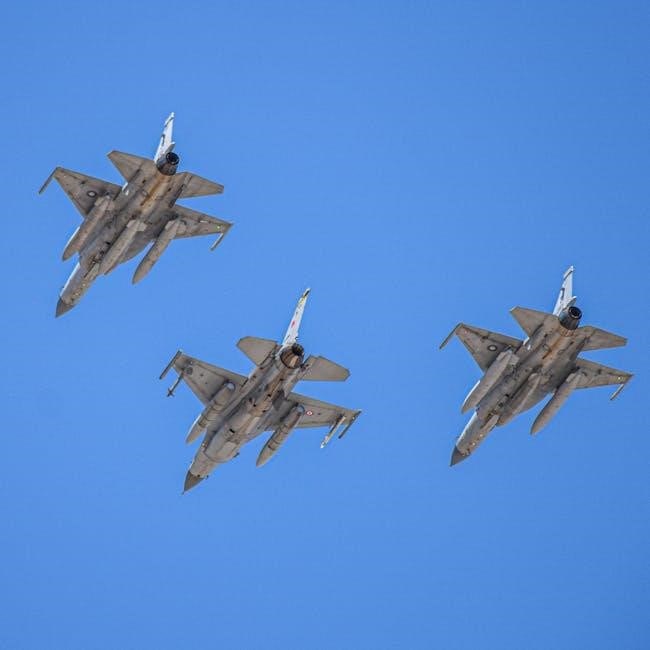
Categories of Russian Military Aircraft
Russian military aircraft are categorized into fighter jets, bombers, transport, and special mission planes, each designed for specific roles like air superiority, strategic missions, and support operations.
2.1 Fighter Jets: Su-35, MiG-35, and Su-27
Russia’s fighter jet fleet includes the Su-35, MiG-35, and Su-27, each excelling in air superiority and multirole capabilities. The Su-35, an advanced variant of the Su-27, features improved avionics, thrust-vectoring engines, and enhanced radar systems, making it highly maneuverable and lethal. The MiG-35, a multirole fighter, is designed for both air-to-air and air-to-ground missions, equipped with precision-guided weapons. The Su-27, a fourth-generation workhorse, remains reliable with its long combat radius and supermaneuverability. Together, these jets form the backbone of Russia’s air defense, ensuring dominance in contested skies and versatility in modern combat scenarios.
2.2 Bomber Aircraft: Tu-160 and Tu-95
Russia’s strategic bomber fleet, led by the Tu-160 and Tu-95, plays a pivotal role in long-range deterrence. The Tu-160, a supersonic bomber with variable-geometry wings, is the most advanced in the fleet, capable of carrying nuclear-tipped cruise missiles. The Tu-95, though older, remains operational with its turboprop engines and strategic endurance. Both aircraft are integral to Russia’s nuclear triad, ensuring strategic reach and deterrence capabilities. Their continued service underscores Russia’s commitment to maintaining a robust nuclear deterrent despite technological challenges and modernization efforts.
2.3 Transport and Special Mission Aircraft: Il-78, An-124, and Tu-214R
Russia’s transport and special mission fleet is vital for military logistics and operations. The Il-78 serves as a strategic aerial refueling tanker, extending mission ranges. The An-124 is the world’s largest cargo aircraft, capable of transporting oversized loads globally. The Tu-214R, a specialized reconnaissance variant, excels in intelligence-gathering. Together, these aircraft enhance Russia’s strategic mobility and operational flexibility, supporting both domestic and international missions with unmatched capabilities. Their roles are indispensable in maintaining Russia’s military readiness and global reach.
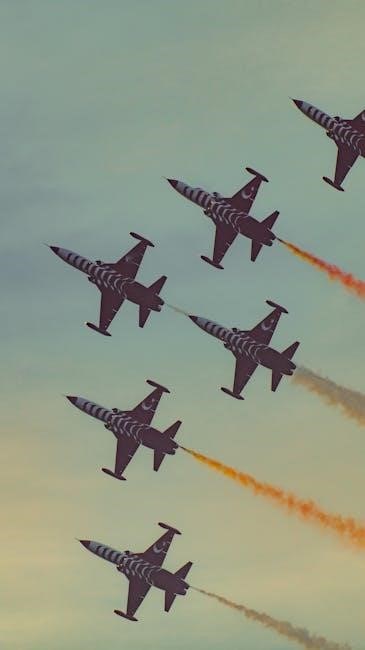
Modernization and Technological Advancements
Russia’s military aviation modernization focuses on integrating advanced radar, avionics, and stealth technologies. These upgrades enhance aircraft performance, survivability, and combat effectiveness, ensuring competitiveness in modern conflicts.

3.1 Upgrades to Legacy Aircraft
Russia has prioritized modernizing its legacy aircraft, such as the Su-27 and MiG-29, with advanced avionics, radar systems, and precision-guided weaponry. These upgrades aim to extend service life, enhance combat effectiveness, and maintain operational relevance in contemporary conflicts. Additionally, older transport aircraft like the Il-78 tanker and An-124 heavy-lift transport have received improvements to their engines and navigation systems, ensuring continued support for military operations. Such efforts reflect Russia’s strategy to maximize the utility of existing fleets amid budget constraints and delays in developing new aircraft.
3.2 Integration of Advanced Radar and Avionics Systems
Russia has focused on integrating cutting-edge radar and avionics into its aircraft, enhancing situational awareness and combat capabilities. The Su-35 features the Irbis-E radar, offering superior detection and tracking of enemy aircraft. Similarly, the MiG-35 is equipped with the Zhuk-AE radar, enabling advanced air-to-air and air-to-ground missions. These systems provide real-time data processing and improved targeting accuracy, ensuring Russian jets can compete against modern adversaries. Such technological advancements underscore Russia’s commitment to maintaining air superiority in evolving battlefield scenarios.
3.3 Development of Stealth Capabilities
Russia has prioritized the development of stealth technology to enhance its aircraft’s survivability. The Su-57 Felon, a fifth-generation fighter, features radar-absorbing materials and internal weapons bays to reduce its radar cross-section. Additionally, the MiG-41, an interceptor, incorporates stealth elements for improved evasion. These advancements aim to counter modern air defense systems. However, production challenges and high costs have limited widespread adoption. Russia continues to explore stealth in future designs, including unmanned aerial vehicles and sixth-generation fighters with hypersonic capabilities, signaling a commitment to maintaining technological parity in air warfare.
The Impact of the War in Ukraine
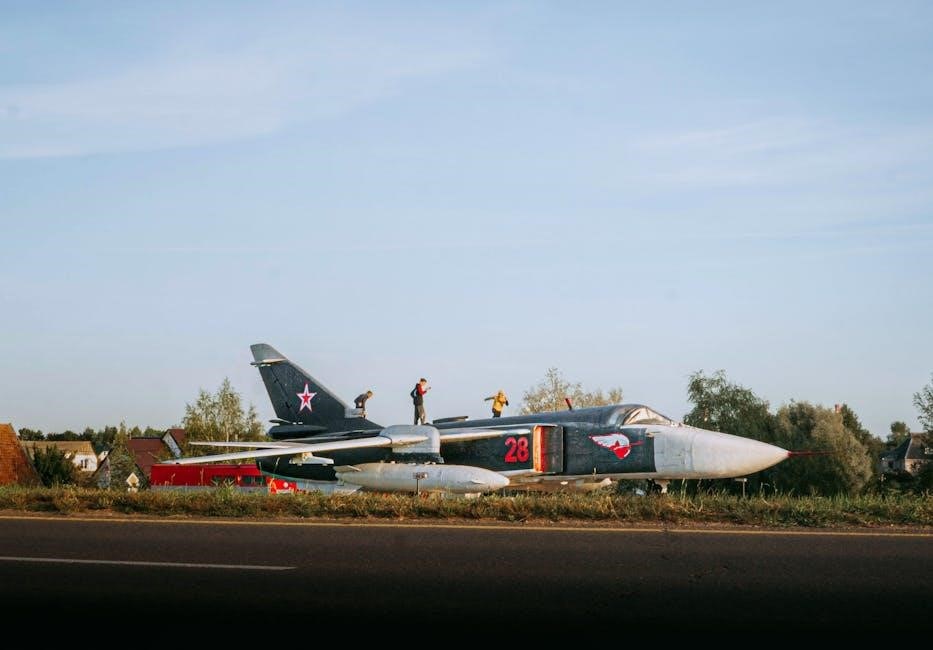
The war in Ukraine has exposed weaknesses in Russia’s military aviation, with significant aircraft losses and challenges in securing air superiority, undermining its global stature.
4.1 Losses and Challenges Faced by Russian Air Force
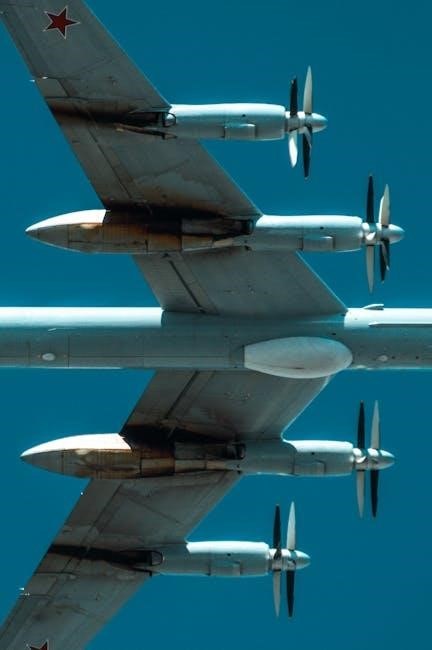
The Russian Air Force has faced significant losses and challenges during the war in Ukraine. Despite its large military budget, Russia has struggled to achieve air superiority, with numerous aircraft, including advanced models like the Su-35, being downed. The conflict has exposed vulnerabilities in Russia’s air defense systems and highlighted the limitations of its outdated aircraft designs. Maintenance issues, pilot training shortcomings, and the effectiveness of Ukrainian air defenses have further compounded these challenges, leading to a notable decline in Russia’s air combat effectiveness and global military reputation.
4.2 Lessons Learned and Strategic Adjustments
The war in Ukraine has prompted Russia to reassess its air force strategies. Key lessons include the need for improved air-to-air capabilities, enhanced pilot training, and better integration of advanced radar systems. Strategic adjustments involve accelerating modernization programs, prioritizing stealth technology development, and increasing the use of precision-guided munitions. Additionally, Russia has focused on enhancing the survivability of its aircraft and improving maintenance practices to address operational challenges. These changes aim to restore air superiority and counter emerging threats in future conflicts.
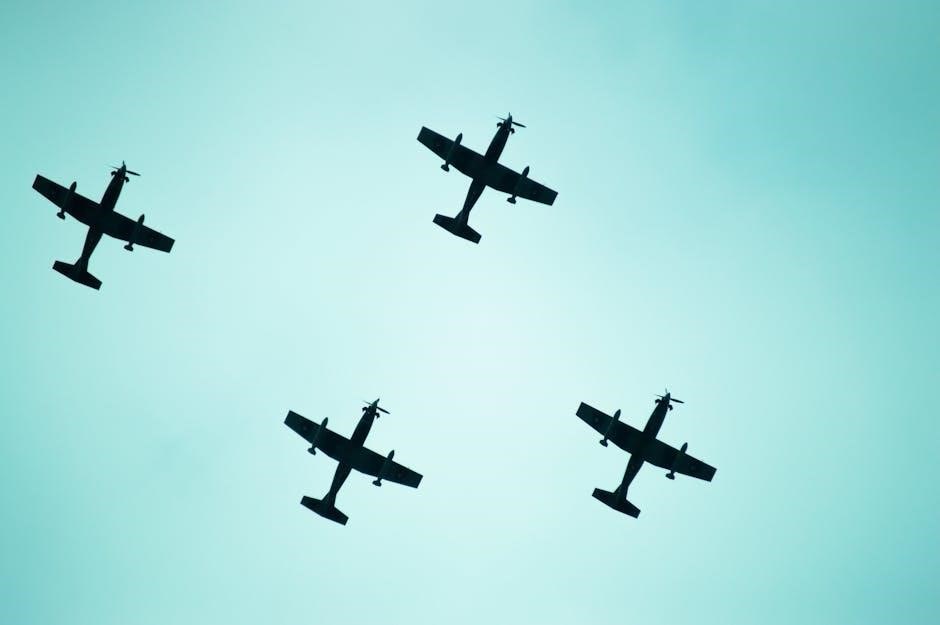
Experimental and Future Aircraft
Russia is developing sixth-generation stealth fighters and advanced UAVs, focusing on AI integration, hypersonic capabilities, and unmanned systems to enhance future air superiority and strategic operations.
5.1 Sixth-Generation Stealth Fighters
Russia’s sixth-generation stealth fighters represent a leap in aerospace technology. These jets feature advanced stealth capabilities, hypersonic speeds, and integrated AI systems for enhanced combat efficiency. Designed to dominate future battlefields, they incorporate cutting-edge radar and avionics, ensuring superior air superiority. With prototypes currently under development, these fighters aim to counter global adversaries, showcasing Russia’s commitment to maintaining its position as a leading military aviation power. The program reflects strategic investments in next-gen technology to secure air dominance in upcoming decades.
5.2 Unmanned Aerial Vehicles (UAVs) and Drones
Russia has increasingly focused on developing unmanned aerial vehicles (UAVs) to enhance reconnaissance, strike, and electronic warfare capabilities. These systems, like the Orion and Altius, offer advanced surveillance and precision strike abilities. Lessons from Ukraine have accelerated UAV development, emphasizing their role in modern conflicts. Drones now play a critical role in Russian military strategy, providing real-time intelligence and reducing reliance on manned aircraft. Their versatility and cost-effectiveness make them indispensable for future operations, ensuring Russia remains competitive in unmanned aviation technologies.
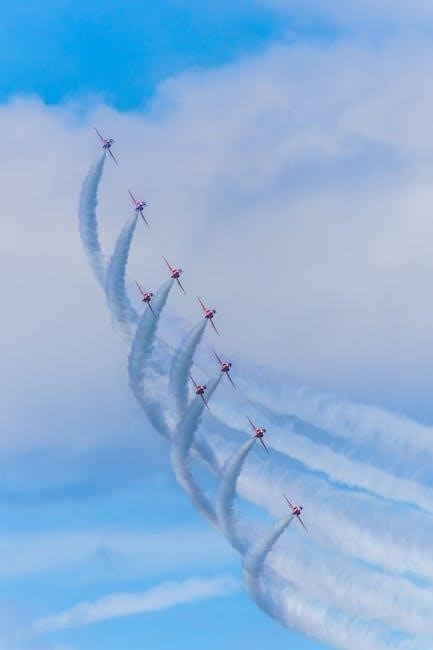
The Role of Russian Naval Aviation
Russian Naval Aviation operates aircraft like the Ka-52 and Su-33, supporting maritime operations. These planes conduct anti-submarine warfare, air superiority, and reconnaissance, safeguarding Russia’s naval interests and borders.
6.1 Aircraft in Service with the Russian Navy
The Russian Navy operates a diverse fleet of aircraft tailored for maritime operations. Key assets include the Ka-52 “Alligator” for anti-submarine warfare, the Su-33 “Flanker-D” for carrier-based air superiority, and the Il-38 “May” for anti-submarine and reconnaissance missions. Additionally, the Tu-142 “Bear” serves as a long-range maritime patrol aircraft, while the An-26 “Curl” provides transport and logistics support. These aircraft enable the Russian Navy to project power, secure maritime borders, and conduct surveillance across vast oceanic regions, ensuring naval dominance and strategic readiness.
The National Guard and Its Air Assets
The Russian National Guard, established in 2016, maintains a range of air assets to support its internal security and counter-terrorism missions. Its fleet includes the Mi-8 and Mi-24 helicopters, which are used for transport, medical evacuation, and attack roles. Additionally, the National Guard operates the An-26 and An-12 transport aircraft for logistics and personnel deployment. These air assets enable the National Guard to respond swiftly to domestic threats, ensuring security across Russia’s vast territories and supporting operations in remote and contested areas with precision and reliability.
Russia’s military aviation continues to evolve, blending legacy aircraft with modern upgrades. Despite challenges, the focus remains on enhancing capabilities to maintain strategic air power and future readiness.
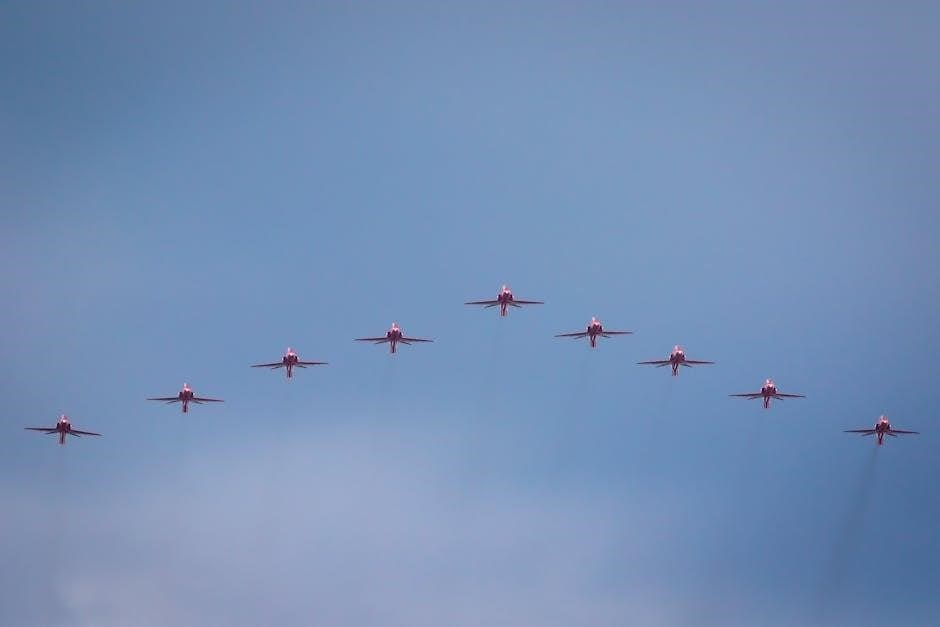
8.1 The Future of Russian Military Aviation
Russia’s military aviation is poised for transformation, focusing on sixth-generation stealth fighters and advanced UAVs. Modernization efforts aim to integrate cutting-edge technologies like hypersonic capabilities and AI-driven systems. Despite budget constraints and sanctions, Russia seeks to maintain its strategic air power by prioritizing innovation and domestic production. The development of next-gen aircraft underscores Moscow’s commitment to competing on the global stage, ensuring its air force remains a formidable force in future conflicts and geopolitical scenarios.